Archive
Federal Welfare-to-Work Hiring Initiative
Agency Reports 1999
CONTENTS
EXECUTIVE OFFICE OF THE PRESIDENT
DEPARTMENT OF AGRICULTURE
DEPARTMENT OF COMMERCE
DEPARTMENT OF DEFENSE
DEPARTMENT OF EDUCATION
DEPARTMENT OF ENERGY
ENVIRONMENTAL PROTECTION AGENCY
FEDERAL EMERGENCY MANAGEMENT AGENCY
GENERAL SERVICES ADMINISTRATION
DEPARTMENT OF HEALTH AND HUMAN SERVICES
DEPARTMENT OF HOUSING AND URBAN DEVELOPMENT
DEPARTMENT OF THE INTERIOR
DEPARTMENT OF JUSTICE
DEPARTMENT OF LABOR
NASA
OFFICE OF PERSONNEL MANAGEMENT
SMALL BUSINESS ADMINISTRATION
SOCIAL SECURITY ADMINISTRATION
DEPARTMENT OF STATE
DEPARTMENT OF TRANSPORTATION
DEPARTMENT OF TREASURY
DEPARTMENT OF VETERANS AFFAIRS
EXECUTIVE OFFICE OF THE PRESIDENT
[Insert Presidential seal rather than photo here]
COMMITMENT: 6
NUMBER OF HIRES: 8
We achieved our hiring goals a year ago, using the strategy of partnering with community-based organizations and local government agencies. Specifically, we established working relationships with agency professionals who did a pre-screening of their potential applicants and referred the most suitable individuals for our interview process. We were successful in achieving our hiring goals through this process of working with local agencies in Fairfax County, Virginia; Arlington County, Virginia; Montgomery County, Maryland; and, the District of Columbia.
Efforts to Leverage Contractor Commitments
Considering our success with hiring welfare recipients to become the federal government’s "new workers," we certainly believe in encouraging contractor participation. As a first step in contractor participation, we will distribute a packet of printed information to explain the Welfare-to-Work Initiative that will point out benefits for contractors to hire qualified staff from local welfare rolls.
Best Practices to Promote Retention and Success in the Workforce
To promote retention and success in the workforce, a focus group was established to augment the support and development of each participant in the program. The STARS (Success, Training and Realizing Success) Program became the primary source of employee development, in addition to technical job training. The group facilitator for the STARS Program initially conducted weekly training sessions utilizing the structured outline and materials offered by the Department of Labor. Further into the program, however, the facilitator personally developed lesson plans and, selected materials and information based on the experiences, problems, needs and concerns of the participants. Speakers, training videos and other learning resources were also incorporated into the program.
Every session begins with an open forum for the discussion of issues that have occurred, or concerns that need to be addressed. Participants and the facilitator offer constructive solutions. These discussions often require further research or the assistance of an expert in the area of concern.
Topics this year have included Effective Communication, Interpersonal Skills, Workplace Principles, Positive Professional Image, Professional Ethics, Balancing Work and Family, Financial Concerns, Parent-Child Difficulties, Marriage and Family Problems, Conflict Management, Managing Change and Stress, Career Development, Work and Life Transitions, Customer Service, and Success As a Way of Life. Many resources were used, including: the New York Times bestsellers, Life 101 by Peter McWilliams, and Knock ‘Em Dead 1998 by Martin Yate. Videos used included the National Press Club Lunch, February 17, 1998, Alexis Herman; the One Year Anniversary of the Welfare-to-Work Initiative at the White House, C-SPAN2; Image and Self-Projection for Women by Julie White; Dealing With Conflict and Confrontation by Dr. Helga Rhode; How to Set and Achieve Goals, Dr. Bobbe Sommer; and CRM Films - Communicating Non-Defensively, We’re On the Same Team, Remember?, The Attitude Virus: Curing Negativity in the Workplace and An Invisible Man Meets the Mummy.
In addition to mentoring, training, career counseling and professional development to promote retention and success in the workforce, a transportation subsidy is available to Welfare-to-Work participants. The Employee Assistance Program, a free outside problem-solving counseling resource, is also available for employees and members of their families.
Benefits of the Federal Welfare-to-Work Hiring Initiative and Plans for the Next Year
The Executive Office of the President agencies have benefited from the Welfare-to-Work Initiative by acquiring hard-working, effective employees. Our hiring record is over 130 percent of our goal. Our new hires have done very well as evidenced by two promotions, three new jobs, and two agency awards. During the upcoming year, we plan to continue our hiring efforts. We will encourage hiring managers to consider Welfare-to-Work candidates for positions and will continue to work with state and local agencies in our recruitment efforts. Most of our initial participants have reached their second year of employment. We will continue to provide a support system for them, through mentors and our STARS program, which includes bi-weekly meetings conducted by a senior staff member of the Human Resources Management Division.
On August 2nd, Vice President Gore met with three Executive Office Personnel Welfare-to-Work employees, Pam Allen, Laura Askew and Susanna Gonzalez, and personally congratulated them on their achievements.
DEPARTMENT OF AGRICULTURE
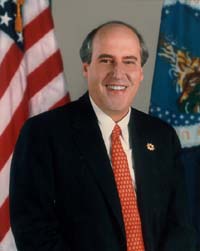
Secretary Dan Glickman
COMMITMENT: 375
NUMBER OF HIRES: 559
USDA has made great progress in hiring and laying the groundwork for future recruitment in support of President Clinton’s Federal Welfare-to-Work Hiring Initiative through a variety of efforts. Continual liaison with current Federal Welfare-to-Work Hiring Initiative contacts continues to be a major aspect of USDA’s Program. Organizations that serve the welfare community have assisted USDA in broadening our reach within the community by sharing job information and vacancy announcements with social service bureaus and job fairs. USDA’s mission areas representing 29 agencies have worked as a team to build upon cooperative efforts all across the country. One example of this partnership exists between the Department’s Centralized Servicing Center in St. Louis and the House of Hope which refer high quality candidates from their client population to compete for USDA positions. Another example of effective partnership involves Rural Development’s Special Emphasis Program which recruits welfare recipients interested in assignments under the Student Temporary Employment Program at a local community college. Several USDA state offices have continued to provide work sites for state public assistance clients to gain valuable work experience and training and in so doing, become more employable. USDA’s Food and Nutrition Service has hired several Federal Welfare-to-Work Hiring Initiative applicants under the Worker-Trainee Program. These individuals are described as enthusiastic and willing to learn while respective supervisors are pleased with the quantity and quality of their work.
Efforts to Leverage Contractor Commitments
USDA continues to emphasize the Javits-Wagner-O’Day (JWOD) Program as a means to increase employment opportunities for welfare recipients. As a result, Deputy Secretary Richard Rominger accepted the Government Award for Services from NISH (formerly known as the National Industries for the Severely Handicapped) on May 18 in recognition of USDA’s long term and, in particular, last year’s spectacular success in creating jobs for people with disabilities.
This honor acknowledges USDA’s efforts to identify cost-effective service contracting that led to a Central Facilities Management contract with Melwood, a community rehabilitation program. As a result, over 100 people with disabilities have found meaningful employment in some of the most highly skilled job positions available in the JWOD Program. The JWOD Act was passed by Congress to leverage the phenomenal purchasing power of the federal government to allow people with severe disabilities the opportunity to provide products and services to federal customers. USDA support has also included services and products provided by Community Rehabilitation Programs in California, Oregon, Tennessee, Texas, Oklahoma, Virginia, Ohio, Idaho, Montana, Louisiana, South Dakota and Washington, D.C.
Best Practices to promote Retention and Success in the Workplace
To help Welfare-to-Work participants meet the challenges that confront them in transition to the workplace, USDA has established programs in supervisory training, mentoring, performance recognition and information sharing.
DEPARTMENT OF COMMERCE
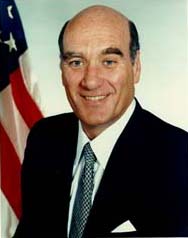
Secretary William M. Daley
COMMITMENT: 4,180
NUMBER OF HIRES: 4,953
The Department’s recruitment and hiring success can be attributed to the Secretary’s commitment and consequent Departmental accountability, especially at the Census Bureau where pre-2000 operations were optimal for substantial hiring and training. The Bureau moved quickly to include Welfare-to-Work goals, strategies and performance measures to their Decennial planning. Each of the regions developed recruitment and hiring goals and directed staff attention and resources to ensuring that local Census offices were coordinating their efforts with local social services agencies, "One Stop" training sites, and Complete Count Committees. Weekly and monthly reports highlighted the numerical status of recruitment generally and the Federal Welfare-to-Work Hiring Initiative specifically. Successful strategies found in one part of the country were shared with those in other regions seeking alternative or more promising approaches. At quarterly regional Recruiters’ meetings, and during intervening teleconference meetings, a permanent agenda item was the Federal Welfare-to-Work Hiring Initiative. Departmental visits to localities and regional offices included briefings with social services providers and former assistance recipients-now employees-themselves.
Currently, we are working with the Department of Labor to award up to $20 million in Welfare-to-Work Competitive Grant funds to support the Welfare-to-Work Census 2000 Employment Project. The Bureau of the Census plans to hire approximately 850,000 workers to successfully accomplish Census2000. Up to 10,000 or more are expected to be TANF recipients. The funds will be awarded to a national service provider and its array of coordinated state and local affiliates, that will identify, recruit and prepare assistance recipients for the local Bureau hiring and selection as enumerators and crew leaders. Successful applicants will complete these temporary ten-week jobs and then be placed into full-time private or public positions by the grantee organization serving that local jurisdiction. The grant calls for follow-up supervision and support for several months following permanent full-time placement, and will help ensure that the transition from welfare to work is permanent.
DEPARTMENT OF DEFENSE
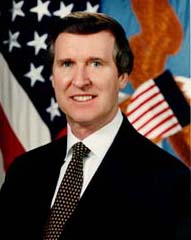
Secretary William Cohen
COMMITMENT: 1,600
NUMBER OF HIRES: 2,634
Defense Components have developed successful methods to identify positions suitable for Federal Welfare-to-Work Hiring Initiative participants, target specific communities, and disseminate hiring information. In many instances, we partner with local organizations to identify and train candidates and streamline the application process. The nationwide applicant interest indicates success in implementing the Department of Defense’s Welfare-to-Work Hiring Initiative.
Defense Commissary Agency (DeCA) publishes open, continuous announcements for locations within the Continental United States through a partnership with the Norfolk Service Center of the Office of Personnel Management (OPM). DeCA accepts applications through the Telephone Application Processing System and the OPM USA Jobs website. The ease and speed of the application and referral process has greatly facilitated DeCA’s recruitment and selection.
Department of the Army publishes articles and includes the Federal Welfare-to-Work Hiring Initiative in speeches of senior-level managers to show Army’s support of the program despite considerable downsizing. Army has exceeded its projected goal to hire employees from the welfare rolls, made OPM Form 1635 part of the in-processing package to identify all new hires, opened vacancy announcements, and worked with local social services agencies to recruit applicants.
Working with local labor and welfare organizations, Department of the Navy has targeted positions likely to match skills of persons new to the workforce. For example, Navy’s Human Resources Service Center Southeast (HRSC-SE) designed a 300-hour computer skills training program emphasizing software applications used by the Center. HRSC-SE then worked with the Private Industry Council to identify and screen welfare recipients to participate in the program and offered employment to successful candidates.
Department of the Air Force continues to support the Federal Welfare-to-Work Hiring Initiative through a variety of recruitment strategies and outreach efforts. Randolph Air Force Base in Texas uses student employment and summer hire programs. Dover Air Force Base participated in the Delaware Welfare Reform Program to disseminate information to participants. Hanscom Air Force Base established a recruitment initiative with the Commonwealth of Massachusetts Transitional Assistance Department.
Efforts to Leverage Contractor Commitments
In June 1997, Secretary Cohen sent a letter to the top 100 Defense contractors, encouraging volunteer efforts to hire welfare recipients into appropriate positions. The Department has received many positive responses, including the following.
- AT&T works with state employment and welfare agencies to identify applicants and receive referrals and hires from welfare roles.
- Aetna’s Chief Executive Officer is on the board of the Welfare-To-Work Partnership, an independent, non-partisan, national effort of the business community to help move people on public assistance into private-sector jobs.
- J.A. Jones established employee groups to offer outreach and support to welfare recipients entering the workplace, including interviewing workshops, clothing closets, and programs to encourage at-risk high school students to learn construction trades to break the welfare chain.
- Johnson Controls developed a Welfare-to-Work model plan to include hiring, training, and retention and described projects through which the company already hires welfare recipients.
- Lockheed Martin identified positions that could be adaptable for welfare recipients, such as metal-working and aircraft painting.
Benefits of the Federal Welfare-to-Work Hiring Initiative and Plans for the Future.
The Federal Welfare-to-Work Hiring Initiative affects more than just the welfare recipients who participate in the program, as it has opened the door to a new source of applicants for employment in a shrinking labor market. As DoD becomes more involved with the Federal Welfare-to-Work Hiring Initiative, the Department also becomes more involved with local community agencies, developing long-lasting relationships and contacts that will serve DoD well in the future.
DEPARTMENT OF EDUCATION
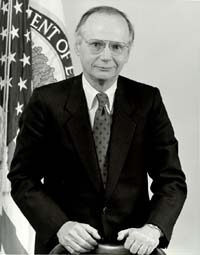
Secretary Richard Riley
COMMITMENT: 21
NUMBER OF HIRES: 26
Recruitment and hiring strategies
ED has hired the majority of its welfare recipients using the Worker-Trainee authority and has hired a few students using the Student Appointing authority to work in our regional offices. We continue to partner with area high schools and colleges to offer employment opportunities for eligible students.
ED posted two Worker-Trainee vacancy announcements (covering multiple positions) during 1997, and we will plan to open multiple vacancy announcements in the fall of 1999 by posting a Worker-Trainee announcement concurrently with any new low-grade job posting. As part of our outreach effort to welfare recipients seeking positions, ED’s Office of Management consistently sends job listings to area social services agencies as well as to job fairs targeting welfare recipients. ED is currently participating in a United Planning Organization program to assist individuals transitioning from welfare to work by providing the opportunity for on-site office work experience. Four individuals are currently working at ED under this partnership.
Efforts to Leverage Contractors Commitments
As reported earlier, in 1997 ED’s then General Counsel and Acting Under Secretary, Judith Winston, sent letters to a variety of education partners, grantees, and associations encouraging their participation in ED’s efforts on this initiative. ED’s then CFO/CIO Donald Rappaport sent a letter to each of the agency’s contractors, urging them to hire welfare recipients.
Best Practices to Promote Retention and Success in the Workforce
Through unique training and development opportunities, the Department has made a concerted effort to build employees’ skills and enable them to do valuable and effective work. Successful mentoring and placement programs help to find the best job fit for an individual and provide him/her with the support and guidance of an experienced employee. Each employee hired under this initiative was matched with a mentor, and all mentors received initial training. While mentors committed to work with their mentees for no more than a six-month period, many of those advisory relationships have continued beyond that period on an informal basis. The Department also emphasizes the need to balance work and family needs, offering flexible schedules where appropriate.
A majority of employees hired under the Worker-Trainee authority have been promoted to the next GS level (GS-2 or GS-3) or above. Recent modifications to the promotions guidelines (effective April 30, 1999) will allow several of these workers to be promoted to the GS-4 level within the next few months.
Benefits of the Federal Welfare-to-Work Hiring Initiative
Through this initiative, ED has brought on board new individuals who contribute to the work of the agency. We believe that these employees’ experiences working at ED have helped their transitions from welfare to work, and we have received positive feedback on the value of their work at this agency.
DEPARTMENT OF ENERGY
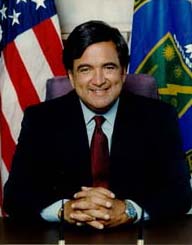
Secretary William Richardson
COMMITMENT: 55
NUMBER OF HIRES: 73
Recruiting and Hiring Strategies
The Department of Energy’s committed leadership has achieved 130 percent of its year 2000 goal to hire 55 former welfare recipients into federal positions. The Department’s managers dedicated efforts and innovation, along with the use of state social service offices, educational institutions, local nonprofit agencies and various outreach facilities have resulted in the hiring of a total of 73 former welfare recipients into federal jobs.
Through partnering with various agencies the Department has surpassed its year 2000 hiring goal. The Albuquerque Operations Office hired employees through their partnership with the Catholic Social Services and the placement offices of the University of New Mexico and the Albuquerque Technical Vocational Institute. Catholic Social Services provides 10 weeks of training to individuals and placement assistance, whereas the educational institutions provided a pool of well-educated candidates. The Job Center used by the Ohio Field Office is an agency that allows individuals to apply for unemployment benefits, training and/or public assistance in one place. The Bonneville Power Administration used recruitment bulletins sent to the Office of Personnel Management (OPM), local agencies and programs serving welfare recipients to announce appropriate positions.
Efforts to Leverage Contractor Commitments
The Department has been aggressive in enlisting the support of its contractors. From all across the DOE Complex our contractors responded by voluntarily committing to participate in the initiative as part of their corporate contribution to their local communities. To date, they have assisted with the training and/or placement of over 60 former welfare recipients.
- The Hanford site contractor for Richland Operations responded by establishing a training program in partnership with state social services, the local college and a nonprofit organization to provide individuals with 12 months of training. Upon the completion of the classroom instruction and on the job training, participants were given assistance in applying for federal employment and other jobs in the community. To date, 18 individuals have been trained.
- Los Alamos National Laboratory in New Mexico has established a program that provides administrative and clerical training, and testing and counseling services. Nine individuals have completed the training program and eight are currently employed: five are employed by the Plus Contractor, two by Los Alamos Laboratory and one by the New Mexico State Police.
- Lockheed Martin, the Idaho Operations Office’s main contractor, has hired six employees. They are also working with Vocational Rehabilitation to identify participants that have completed their retraining programs and provide them with opportunities to improve their skills by attending courses on computer software utilization.
- Fluor Daniel Fernald and Westinghouse Government and Environmental Services Company (WGESC), the main contractors for the Ohio Field Office, have hired seven employees in the clerical and janitorial fields. They are working with public welfare agencies in the surrounding counties to identify potential employees. For employees a mentoring program has been established in which the mentors suggest added training areas or educational opportunities that a worker might pursue. A few employees have taken advantage of the tuition reimbursement program currently in place.
- Westinghouse Savannah River Company, Savannah River Operations Office, established two programs of training and skill development to enhance the employability of welfare recipients. The programs have served a total of 31 individuals, 26 females and five males. Presently, 18 are employed in various entry-level positions.
The success of the program has been attributed largely to the participants and the Department’s employees. The positive results of the program arise from the communication and hard work of all involved. In all instances, mentoring programs have been established to assist employees during the transitional period. Idaho Operations Office participants, their mentors and supervisors work closely with caseworkers from state offices and placement centers with regard to appropriate work behaviors. Mentors at the Albuquerque Operations Office serve as role models and assist with job development and training. Southwestern Power Administration found that the mentoring relationship proved helpful in adjusting to "work life."
Training and counseling services are provided to all involved in the program. In Albuquerque, supervisors and mentors were trained and counseled in providing assistance with developing training plans for program participants. The training plan requires supervisors to review performance after 90 days to assess areas for improvement and/or to schedule additional training. At Southwestern, counseling is provided to participants to teach manageable ways to deal with personal events and continue successful functioning at work. The Nevada Operations Office Employee Assistance Program provides services to all employees in an effort to maintain a family friendly workplace. Assistance it given to employees in coping and identifying solutions to personal and work problems before they interfere with work productivity and affect attitudes.
Program participants have proven that perceived problems are not significantly greater or different from that of the usual employee population. Savannah River Operations Office found that self-esteem improved when positive actions were acknowledged and/or recognition and letters of commendation were given for work well done. Southwestern Power Administration found that as self-esteem increased, an individual’s knowledge progressed, and so too could the sphere of work and level of responsibility, providing meaningful assignments and being responsible for their completion. Golden Field Office found that offering flexible work schedules aided in childcare, transportation and administrative requirements imposed by the social service agencies to assist in the transition from the welfare roles, making personal problems almost nonexistent.
Bonneville Power Administration summarizes retention and success with three criteria. First, use an up front screening process to determine if candidates are suitable for federal service. Second, establish a mentoring program with current employees as mentors, and an orientation that addresses information on child care and transportation subsidy issues. Lastly, promote the use of internal training and mentoring to assist with personal development.
Benefits of the Federal Welfare-to-Work Hiring Initiative and Plans for the Future
In the past two years, a time of constrained resources, the Federal Welfare-to-Work Hiring Initiative has served to alleviate workload shortages in administrative and clerical areas. Many have viewed the program as providing a potential source of highly qualified individuals. It is anticipated that the program will be used as an important staffing tool to by the various offices in meeting Secretary Richardson’s Workforce 21 Initiative goals and objectives.
For the future, Departmental activities will be threefold: (1) participate in Open Houses and Job Fairs to recruit and screen large numbers of applicants, (2) place notices in welfare offices, state and private employment offices, and nonprofit organizations that interact with welfare recipients, and (3) work with other federal agencies, under the leadership of the Office of Personnel Management, as well as with local Federal Executive Boards and Associations for effective use of recruiting resources.
ENVIRONMENTAL PROTECTION AGENCY

Administrator Carol Browner
COMMITMENT: 120
NUMBER OF HIRES: 85
From the outset, the Vice President has stressed that the welfare-to-work initiative is not just a hiring program. Fundamentally, the effort " . . . is about changing lives." With that as both a challenge and a definition of success, the Environmental Protection Agency (EPA) has worked to design and implement an effort that goes beyond just posting hiring statistics. EPA’s "Pathways to Opportunity" program has focused on chances to develop, experiment, succeed and, in the process, contribute to the accomplishment of the EPA’s vital mission: protecting public health and safeguarding the environment.
Working toward this focus, the program’s original design featured three components, each relying on strong senior leadership commitment as a key to success. These components -- recruitment and hiring outreach, wide-ranging developmental and support programs for participants, and leveraging the acquisitions community -- began along separate tracks in the hope that leadership commitment could weld them together into something cohesive. But as implementation has proceeded, such welding has proved unnecessary. The Vice President’s challenge has taken hold on its own. Each Pathways program component has grown together into a strong, unified program, gaining depth in the organization that was unimagined back in March 1997 when the Government-wide effort was launched. As the Vice President challenged, people’s lives have indeed been changed – both those of the participants and of their EPA colleagues. Here is a sketch of how that happened.
Recruitment and Hiring Outreach
Initially, the program coordinators in each regional and headquarters location recruited prospective program participants by working through their local Federal Executive Boards and Federal Executive Associations to contact local or state welfare referral organizations. The Worker-Trainee hiring authority was the primary appointment vehicle employed and vacancies were listed on the OPM website. In addition, coordinators learned that community-based organizations near their offices worked with candidates who live nearby and that hiring local participants promoted a new sense of community between the agency and the participant. Program participants and their agency mentors helped work out child care arrangements, accommodations for home emergencies, work schedules, and transportation issues when a neighborhood applicant was hired as a program participant. Agency staff participate in lunch time reading programs, science curriculum enrichment efforts, and sponsorship of school field trips when participants’ children were attending the nearby school.
Wide-ranging Developmental and Support Programs
While weaving together community and work is itself a powerful support force, the Agency has also embarked on an ambitious developmental effort for its participants and their supervisors and mentors. Each Pathways program participant is assigned a peer mentor on entrance to the program. The mentor assists the participant in making a successful transition to the job, talking over issues that might not be raised in employee-supervisor discussions. Supervisors are guided through an orientation of their own where their responsibilities are clearly outlined and the program’s goals overviewed. Participant orientation consists of a combination of workplace survival skills and basic office practices and procedures training extending over a two-week period. Only then do participant job assignments begin with regular participant group meetings held to gauge the success of each participant in their transition into the workplace. Program participants also take regular classroom training specifically related to their office’s work. Other support services provided to program participants include a $60 per month transportation subsidy and flexible work schedules. These supports are consistent with the EPA goal to protect the environment.
Leveraging the Acquisitions Community
EPA’s contractor community has also been challenged to contribute to the Agency’s Pathways efforts. EPA’s acquisition’s director has personally outlined the specifics of the Administration’s efforts for the contractor community, encouraging them to hire former welfare recipients onto their staffs. She has also transmitted guidance to the community on the charges allowable as contractors to make such hires and encouraged their participation in the program.
EPA’s efforts now call for it to build on the strong program that has taken hold. Second generation hiring efforts are now being launched to meet the year 2000 hiring goal set by the Administrator at the program’s outset. Recruitment will focus on community-based referrals. Training, development, and support efforts will be fine-tuned and full advantage will be taken of the new promotion flexibility offered under the Worker-Trainee hiring authority. Renewed efforts will be made to reach out to the contractor community to demonstrate the good business reasons for program participation. The Pathways to Opportunity program is not just a hiring effort. It is a chance to affect the lives of program participants and the Agency alike.
FEDERAL EMERGENCY MANAGEMENT AGENCY

Director James Lee Witt
COMMITMENT: 125
NUMBER OF HIRES: 69
The secret of the Federal Emergency Management Agency’s (FEMA) success in fiscal year 1999 was maintaining constancy of purpose in pursuing the Welfare-to-Work initiative under our Employment to Empowerment program. Our commitment to the program participants is to ensure that they are afforded every opportunity to make their term of employment a valuable experience. As FEMA provides meaningful work, the participants acquire basic job skills, which will serve as their foundation for future successful careers, and of utmost importance, we have empowered our participants to help themselves, to lead by example and to become greater assets to their communities.
Recruitment Strategies
The Federal Emergency Management Agency currently has on board a total of 69 welfare-to-work participants. FEMA designated the following occupational areas for hiring under our Employment to Empowerment Program:
File Clerk
Data Entry
Secretary
Teleregistration Clerk
Custodians
FEMA launched an active recruitment effort to target Welfare recipients for employment at our National Processing Service Centers (NPSC) located in Hyattsville, Maryland; Denton, Texas; and, Round Hill, Virginia. The positions are Disaster Temporary, and are not to exceed one year.
FEMA advertised in the Washington Post and other local newspapers for Disaster Temporary positions, we received applications for clerical, filing and data entry vacancies at our three NPSC locations. Additionally, FEMA advertised Worker-Trainee positions for both our Headquarters Washington, D.C. location, and our 10 regional sites throughout the continental U.S. These positions may lead to permanent employment upon successful completion of the program and the availability of agency funding.
Copies of the Agency’s Worker-Trainee advertisement were mailed, faxed, and hand carried to local churches, Social Service Offices, and community based organizations for posting. The Worker-Trainee advertisement was posted on the Internet and in the Federal Career Opportunities, biweekly publication. In addition to vacancy advertisements, FEMA tapped into Community based organizations in Prince George’s County, Maryland; Fairfax, Loudon and Washington Counties,Virginia; Charles Town and Martinsburg, West Virginia; Washington, D.C.; and, Denton, Texas. FEMA employment officials have personally visited social services offices in Washington, D.C., Virginia and West Virginia, and received a number of well-qualified referrals. The social services personnel were graciously helpful and delighted that time was taken to personally meet and discuss strategies for fulfilling the requirements of this important initiative. The Prince George’s Private Industry Council, Fairfax and Prince George’s MAXIMUS organizations have provided numerous well-qualified applicants for consideration.
Personnel officials took the initiative to contact a number of large churches in Washington, D.C. and Prince George’s County, Maryland, where a large percentage of their congregations reside in the District of Columbia, and neighboring counties in Maryland and Virginia. Area pastors and other personnel were excited about this initiative and pledged their support in assisting applicants with resume preparation.
Welfare-to-Work Initiative Activities
Due to FEMA’s aggressive recruitment efforts, we received an overabundance of applications. Consequently, networking relationships were established with other agencies, in which applications were shared to ensure maximum consideration of all candidates. The Welfare-to-Work Coordinator and support staff participated in several Federal and private sector meetings and conferences regarding the initiative. We attended the following events:
- Congresswoman Eleanor Holmes-Norton Job Fair, Washington, DC
- US Air Arena Job Fair, Largo, Maryland
- NPR Monthly Brown Bag Meetings
Retention Practices
On October 1, 1997, the Maryland NPSC implemented the FEMA Transit Subsidy Program which enable agency Welfare-to-Work employees to receive $23.00 monthly in METROCHEK vouchers. These vouchers may be exchanged for the fares of any of the other types of public transportation that serve this area, including: Metrobus, commercial vanpools, county and commuter buses, MARC Rail, and Virginia Railway Express. Metro officials conducted a short forum to explain how the METROCHEK program works.
Leveraging Our Commitment
A memorandum was prepared for the Senior Procurement Executive forwarding several source documents listing numerous potential government contractors. The memorandum recommended including non-binding language in our contractual documents, encouraging contractors to hire welfare recipients.
GENERAL SERVICES ADMINISTRATION
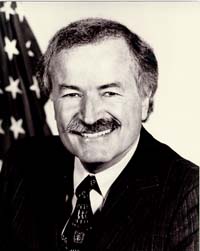
Administrator David J. Barram
COMMITMENT: 121
NUMBER OF HIRES: 102
The General Services Administration (GSA) has chosen a hiring and retention strategy with a local focus adjusting to a welfare system driven by local rules, practices and processes. The Administrator has clearly stated his strong support for the GSA Welfare-to-Work Program and its focus on the role of mentors to encourage retention. Relying on excellent regional coordinators and local outreach, GSA managers and Human Resources advisors teamed with local social service, educational and veterans organizations to engineer a variety of solutions to meet specific local needs. While applicant pools in some areas fit the Worker-Trainee profile; GSA staff in other areas have used Veterans Readjustment Appointments to tap sources of veterans receiving Temporary Assistance for Needy Families (TANF) support. Still other GSA regions have successfully sought out students receiving TANF funds, hiring them through the Student Educational Employment Program. GSA has made special efforts to partner with other federal agencies, state and local governments, as well as community and private organizations. GSA has taken a leading Welfare-to-Work role in several of its regions, including Fort Worth, Kansas City and Boston.
GSA continues to have an important role in providing affordable child care for federal employees. Since 90 percent of TANF recipients are single mothers with young children, GSA is aware of the potential impact its ongoing efforts to address this difficult and complex problem could have on the welfare reform effort. Current plans to assist low-income federal workers will link individuals with state and local child care resources.
Efforts to Leverage Contractor Commitments
GSA continues to engage in considerable contractual involvement with such groups as the National Industries for the Blind and the National Industries for the Severely Handicapped which supports welfare reform efforts. While we are unable to provide information on the number of welfare recipients hired, the impact of this involvement is far-reaching. GSA is working closely with others in the federal acquisition community to find ways for contractors to voluntarily further the President’s goals, without adding burdens to the contracting process.
Best Practices to Promote Retention and Success in the Workforce
Training, mentoring, and counseling has been emphasized. For example, employees hired in GSA Headquarters completed an initial 6 weeks of group orientation and classroom training in workplace, transitional, and technology skills at the GSA Employee Resource Center. In addition, on-the-job training in the Office of Human Resources was provided before movement to target positions. New employees were matched with mentors or "Buddies" and met with them frequently to help them succeed in the workplace. Human Resources staff continues to provide counseling as needed.
Benefits of the Federal Initiative and Plans for the Future
The GSA Welfare-to-Work experience has been very positive. Of the 102 employees hired under this program so far, all but a few have remained at GSA, or left for better positions. Plans for the future include meeting the special needs of the new employees and developing funding incentives for additional hiring initiatives.
DEPARTMENT OF HEALTH AND HUMAN SERVICES

Secretary Donna Shalala
COMMITMENT: 300
NUMBER OF HIRES: 362
The Department’s success rests on the philosophy that it should be impossible to tell the new workers from the other members of the HHS family. Our Federal Welfare-to-Work Hiring Initiative has been integrated with my ongoing strategy to improve the quality of work life at HHS, which emphasizes enhanced career development opportunities and family friendly programs available to all employees. New hires are offered intensive training, mentoring, and a variety of support services to help them make a smooth transition from welfare to the world of work. We have also capitalized on our long-standing partnerships at the state and community levels to augment and reinforce the support available to new hires.
Our Operating Divisions have used a variety of successful implementation strategies:
- At its Atlanta headquarters, the Centers for Disease Control (CDC) has worked closely with the Georgia Department of Family and Children Services to recruit over 60 quality candidates. New hires are offered the assistance of specially trained mentors, are provided targeted training in basic office procedures, and receive transit benefits. With the active input of its new hires, CDC is developing a training curriculum designed to optimize career development opportunities.
- The Food and Drug Administration offers a 2 week transitional experience to its new hires. A two-day basic orientation sessions is followed by an 8 day "workplace survival" module under the guidance of individual mentors, where the trainees practice basic office tasks. New hire reunions are held after 9 to 12 months on-board, where employees share their work experiences and discuss career development strategies.
- The Health Resources and Services Administration offers specialized training for supervisors of former welfare recipients. Monthly meetings for the new hires include invited guest speakers who advise on topics ranging from financial management to professionalism to ethics, as well as other skills that will enhance growth opportunities.
- The Health Care Financing Administration’s "Career Start" program emphasizes the positive nature of developing an individual career. Each employee is assigned a personal mentor and receives training in coping with workplace transitions, effective time management, and other pertinent topic. Participants meet bi-weekly as a group with employee assistance program staff to address workplace issues that arise during their transition.
- The National Institutes of Health (NIH) has expanded on an earlier effort to prepare Federal Welfare-to-Work Hiring applicants for the Office of Personnel Management’s clerical test. NIH has worked in partnership with the Montgomery County government and Montgomery College to develop a clerical exam prep class. To date, 58 percent of enrollees have passed the test, compared to an average pass rate of 26 percent. Eight prep class students have been hired into the federal government, and 25 others have found jobs in private industry and state/local government.
The orientation, transition, and support strategies we offer our new employees have helped them to become valuable contributors almost immediately. Equally important, the Federal Welfare-to-Work Hiring Initiative has been transformed from a short-term imitative to a mainstream recruitment strategy. I expect our success to continue well into the future.
DEPARTMENT OF HOUSING AND URBAN DEVELOPMENT
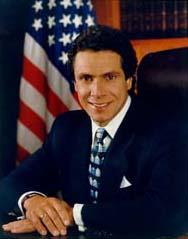
Secretary Andrew Cuomo
COMMITMENT: 200
NUMBER OF HIRES: 142
The Department of Housing and Urban Development (HUD) has committed to fill 200 positions with qualified, eligible Federal Welfare-to-Work Hiring Initiative candidates by the year 2000. These employment opportunities are being shared between Headquarters and field locations throughout the country.
Currently, the Department has hired 142 employees under the Federal Welfare-to-Work Hiring Initiative toward the goal of 200 hires by the year 2000. The majority of these hires were brought in as Worker-Trainees under Temporary Appointments Pending Establishment of a Registrar (TAPER), although a few were hired at higher grade levels (commensurate with their experience) under other types of permanent appointments. After three years, the Worker-Trainees may be converted to career (permanent) appointments; and as of April 30, 1999, the U.S. Office of Personnel Management (OPM) has approved new regulations to allow for promotions up to GS-4 under the TAPER authority.
HUD Human Resources staffs across the country are continuing to work closely with welfare agencies and other organizations who are affiliated with welfare recipients at local levels to keep them apprised of job opportunities within the agency. Vacancy announcements have been sent to these agencies and listed on the OPM, USA Jobs Website.
Efforts to Leverage Contractor Commitments
On May 8, 1998, HUD Secretary Andrew Cuomo issued a letter to all HUD contractors encouraging them to hire welfare recipients to work on HUD contracts. It was noted in the letter that, under certain contracts, federal acquisition rules permit the Government to reimburse federal contractors for costs incurred in training personnel, if those costs are related to the job for which the individual is hired. HUD contractors were also invited to share success stories with the Department.
Additionally, the HUD Contractor’s home page on the Internet contains a full-page message on the Federal Welfare-to-Work Hiring Initiative program and strongly encourages the hiring of welfare recipients by HUD contractors. The names of HUD contract personnel are also included, as well as automatic links to OPM, National Partnership for Reinventing Government, and Department of Labor websites.
Best Practices to Promote Retention and Success in the Workforce
The HUD Training Academy (HTA) has joined with the Employee Assistance Program (EAP) staff in Human Resources to develop a detailed portfolio of core training modules to ensure high job retention and success for the new hires. More than 30 training modules have been developed by the HTA that are specifically designed to assist the Federal Welfare-to-Work hires once they have entered on duty. The courses cover such topics as Computer Operations, Proofreading, Customer Service, Image and Self-Esteem, Work Habits, Telephone Techniques, Time Management, Public Speaking, Balancing Work and Family, Stress Management, Financial Management, Ethics, and Individual Development Plans (IDPs). Further, a comprehensive and confidential employee assistance program is readily available to address a wide variety of issues of the new employees and their family members, and includes significant counseling services to meet the personal needs of each employee.
Since the inception of the program, HUD managers have been so pleased with their selections. The vast majority of the selectees has already been promoted to the maximum level allowable under the TAPER appointments, and is now looking for methods for further promotions and/or to get the trainees into upward mobility positions. To address this concern, HUD is currently developing an internal promotion plan called HUD Opportunities (HOPS) that will facilitate progressive promotions of Federal Welfare-to-Work hires into permanent positions, consistent with their experience and qualifications under OPM requirements. The majority of the positions will be at the GS-4, 5 and 6 levels.
Benefits of the Federal Welfare-to-Work Hiring Initiative and Plans for the Future
The overwhelming response from HUD program managers has been a very high degree of satisfaction with the Federal Welfare-to-Work hires. For the most part, they find the employees conscientious, eager to learn, and very reliable. Because of this, two new initiatives are underway to increase the overall numbers of Federal Welfare-to-Work hires.
The first program will target 40 receptionist positions in support of Secretary’s Representatives and Senior Community Builders located throughout the country. These individuals will receive and refer visitors and telephone calls and provide administrative and clerical support to assigned offices.
The second program involves a partnership with HUD and Neighborhood Networks. This proposal provides for the placement of over 100 Federal Welfare-to-Work hires in 51 Multifamily Offices across the country for a 14-month period under term appointments. The primary objective of the program is to provide participants with formal training, practical job experience, and employment references that could be used to gain permanent employment. The program would be a continuing process, and as each 14-month term expires a new Neighborhood Networks graduate would be hired to replace departing graduates.
DEPARTMENT OF THE INTERIOR

Secretary Bruce Babbitt
COMMITMENT: 325
NUMBER OF HIRES: 246
The Department of the Interior is proud to be a part of this very important and rewarding program. Our efforts to move people from welfare rolls to work continue to be a major focus of our human resources’ management initiatives. As of July 1999, we have hired 246 individuals, making progress toward meeting our goal for the year 2000. A number of organizations contributing to the Department’s success received public recognition for their commitment to making the program work. The program’s success was reinforced through an article published in the Department-wide newspaper, People, Land & Water.
Recruitment and Hiring Strategies
Our success is due in large part to partnering with local, county and state employment offices, and nonprofit organizations that help in identifying and matching welfare recipients to target positions. Additionally, we use automated vacancy announcement systems and distribute employment information and application procedures to welfare, employment and nonprofit organizations.
The Worker-Trainee Program is primarily used to hire welfare recipients for the positions available under the initiative. We have also had success in using the Student Educational Employment Program, Veterans’ Readjustment Appointment authority, time limited or term appointments, special appointing authorities for hiring persons with disabilities, and Office of Personnel Management examining. In Alaska, use of the Local Hire authority and the Alaska National Interests Land Conservation Act, have allowed successful employment opportunities for a targeted population that is largely underemployed or living a subsistence lifestyle.
Our efforts have helped to energize and provide valuable work experience to some recipients who have had no recent work experience, through our Volunteer in the Parks program. As a result, these volunteers are able to use the experience to help market themselves for other employment opportunities. One region within the Fish and Wildlife Service continued a partnership with an employment and training consortium that resulted in providing work experience to individuals receiving public assistance. This region has also hired individuals in their Refuges and Wildlife program, Realty, Budget and Finance, and Personnel programs.
Efforts to Leverage Contractor Commitments
Interior’s Office of Acquisition has established a Welfare-to-Work web site and encourages participation in this hiring initiative through the procurement process. Bureaus and offices are encouraged to use contracts with the Javits Wagner O’Day program as a possible source in helping to meet the hiring needs of welfare recipients. We will continue to actively participate in and support the initiatives in the Procurement Interagency Welfare-to-Work Working Group.
Best Practices to Promote Retention and Success in the Workplace
To retain welfare recipients on our rolls, we are striving to provide career opportunities rather than short-term experience. Position restructuring is widely explored. We provide training and transition services under such programs as our Career Transition Assistance Program that offers useful services in dealing with life transitions. Our Job Corps Programs throughout the Department have skills assessment tools and prepackaged curriculums to enhance jobs skills. Our Development Learning Center provides computer skills training. We use the General Services Administration as one of our primary source of child care information and for guidance on transportation subsidies. The use of Alternate Work Schedules has been key in helping with child care and transportation issues.
Benefits of the Federal Welfare-to-Work Hiring Initiative and Plans for the Future
The benefits of the welfare-to-work program in providing motivation for a new start are evident through our success in hiring employees who are enthusiastic and dependable workers. We will continue to combine our resource management experience with innovative ideas to provide public awareness of our program initiatives and job opportunities. We will also participate in job fairs and other employment-based activities. We will continue to share information with various employment networks, and distribute employment information to targeted sources.
We are jubilant about this program and the confidence that it give others. Looking ahead, we are committed to intensifying our efforts to seize additional opportunities. To ensure that we build on our success, we will encourage every effort to increase management involvement with the focus toward expanding the candidate pools to include dependable and enthusiastic welfare recipients for our positions.
DEPARTMENT OF JUSTICE
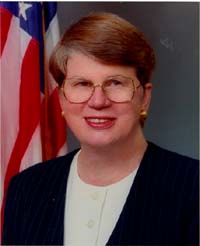
Attorney General Janet Reno
COMMITMENT: 450
NUMBER OF HIRES: 305
Recruiting and Hiring Strategies
- The Attorney General emphasizes to the Department’s components, both verbally and in writing, the importance of this program in putting America to work and making a difference. She frequently meets with component heads and discusses the status of the program with them and how they intend to meet their hiring goals.
- The Department of Justice’s components have made extensive use of the Worker-Trainee appointing authority. We have also used several other competitive, excepted, and agency specific appointing authorities to hire new employees under this program.
- The Department’s components developed recruiting sources that are helpful in targeting welfare recipients. We established contacts with state and local employment offices. We also encouraged developing collaborative arrangements with several schools and private organizations.
- The Department has a web site and has put the Department’s Welfare-to-Work Plan on the site. We have also published a Welfare-to-Work Directory with the name, phone, and fax numbers of our component Program Managers who are knowledgeable of the jobs available under this program. This web page has been successful in attracting and responding to job applicants.
The Department’s Management and Planning Staff distributed a memorandum from the Administrator, Office of Federal Procurement Policy to Bureau Procurement Chiefs informing them of the President’s Federal Welfare-to-Work Hiring Initiative and asking them to support the program’s goal of providing jobs to welfare recipients.
Best Practices to Promote Retention and Success in the Workforce
- Mentor Program -- Virtually every Department component participating in the Federal Welfare-to-Work Hiring Initiative is using some form of mentor program. A mentor is available to the employee to answer questions, alleviate fear or anxiety about the new workplace, and act as a confidant to help the employee with a variety of life’s issues.
- Formal and On-the-Job Training Opportunities -- Both types of training are being used to familiarize and orient employees to the job environment. Department components tailor training to the circumstances of the employees, and consider their overall adjustment to the work environment.
- Child Care -- In addition to the listing of child care providers the Department provides to employees, the Personnel Staff used the Internet to develop sources of additional child care referrals for distribution to mentors and welfare recipients. In developing this information, the mentor/supervisor of one former welfare recipient was referred to a county government agency where she was able to obtain additional monetary assistance to pay for child care.
- Transportation Subsidies -- On October 1, 1998, the Department initiated a transit subsidy program. The subsidy program was implemented on a component-by-component basis. The Attorney General has declared a subsidy limit of $21 per month ($23.10 with the bonus).
- Earned Income Credit -- The Department made arrangements with the Internal Revenue Service to inform our employees of the eligibility requirements for the Advanced Earned Income Credit. More than 17,000 employees were initially identified as low-income employees by virtue of the Internal Revenue Service’s income guidelines. More than 150 employees applied for the credit. We have pledged to continue to publicize this program and provide financial counseling to Federal Welfare-to-Work hires and low-income employees who potentially meet the criteria for the Earned Income Credit.
- Income Tax Assistance -- The Department has made all low-income employees and Federal Welfare-to-Work Hiring Initiative participants aware of the voluntary income tax assistance services available to assist them in filing their income tax returns free of charge.
- Financial Counseling -- The Bureau of Prisons Human Resource employees assisted the former welfare employees in arranging plans to pay off debts, and arranging for checking and savings accounts for these employees. Several other components have also counseled employees to help them manage their finances.
- Clothing Allowances -- The Bureau of Prisons provided clothing allowances for Bureau uniforms to help new employees be able to dress for work. They also worked with Suited for Success, a private organization that provides professional attire, and other essential services to women entering the job market.
- Job/Interview Workshops -- Some of the Department’s components have worked with state and local welfare and employment offices to present informative workshops to job applicants who failed to get a job and properly interview with employers. The purpose of these workshops was to prepare applicants for the next job interview and teach them valuable interview techniques.
One of the most salient benefits has been the advantage that so many people have taken of the employment opportunities under this Program. Many of these new employees have made the necessary sacrifices to effect positive change in their personal and work environments. It has also been most rewarding to see how Department employees have invested the time and effort in these new employees to teach them how to succeed in the job market. They have served as mentors and counselors helping them with all aspects of life so they can succeed. Many of these employees had marketable skills that our managers were pleasantly surprised to learn about when employees reported for the initial interview.
During the next year and until the end of fiscal year 2000, the Department is committed to striving to fill the 450 positions allocated for the Program. Management will continue to provide highly visible leadership to keep hiring efforts from stalling. We need to continue efforts to keep employees informed of benefits, particularly in the area of affordable child care assistance, the earned income credit, transportation subsidies, and the availability of free tax preparation services. We do not want employees to return to the welfare rolls simply because of the lack of child care providers or low rates of pay.
DEPARTMENT OF LABOR
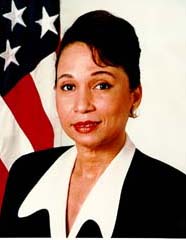
Secretary Alexis Herman
COMMITMENT: 120
NUMBER OF HIRES: 161
The Department of Labor (DOL) continues to be successful in recruiting and hiring qualified individuals from the welfare rolls. DOL has established extensive partnerships with state, local, community-based organizations (such as Maximus in Maryland, Conserve in Washington, D.C., Work First in Atlanta), religious organizations and the private industry councils. The Department of Labor used a variety of appointment authorities, including the Worker-Trainee Appointment Authority, Veterans Readjustment Appointment and the Student Temporary Experience Program to maximize hiring. Through this strategy, DOL exceeded its two-year hiring commitment of 120 hires by hiring 161 individuals.
Efforts to Leverage Contractor Commitments
DOL sent a letter to all current vendors and contractors asking them to fill or develop positions that would be attractive to welfare recipients. By September 1999, DOL will follow-up with the contractors and vendors to assess their successes and identify issues in hiring welfare recipients. The information obtained from this assessment will allow us to refer employers to the community-based organizations that are part of the Vice President’s Welfare-to-Work Coalition to Sustain Success.
Best Practices to Promote Retention and Success in the Workforce
The Department’s welfare hires were enrolled in a four-week Worker Training and Assistance Program (WTAP) -- a training experience that addresses workplace skills, transitional skills, and on-the-job training. All of the hires have been promoted and have access to a full array of career counseling services through the Department’s Career Assistance Centers. DOL conducts quarterly meetings with the hires to ascertain career development needs and holds periodic meetings with local service providers to discuss issues regarding child care, health insurance and housing. The Department offers a transit subsidy to offset transportation costs. DOL offers other assistance services, such as a nationwide counseling and referral service, to assist in balancing the needs of work and family.
In the National Office, the Department coordinated with the Office of Personnel Management to conduct clerical testing for the WTAP participants. Participants attended training designed to enhance their skills and to familiarize them with components of the exam. In the Atlanta Regional Office, the Career Assistance Center offered workshops to assist Worker-Trainees to prepare for the clerical test.
Benefits of the Federal Welfare-to-Work Hiring Initiative and Plans for the Next Year.
The Federal Welfare-to-Work Hiring Initiative has enabled the Department to hire highly-motivated and talented individuals who have made substantive contributions to the accomplishment of our mission. Overall, managers have been very supportive and pleased with the caliber of the hires.
For fiscal year 1999, the Department plans to hire an additional 22 welfare recipients (six in the National Office and 16 in the Regions). Hiring has already begun and DOL will continue its aggressive targeted outreach and partnering efforts with state, local and nonprofit, community-based and religious organizations to identify welfare recipients. DOL will increase its focus on conversion and providing career growth and lifelong learning.
NASA
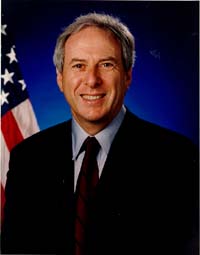
Administrator Daniel Goldin
COMMITMENT: 40
NUMBER OF HIRES: 32
The NASA Centers are strongly encouraged to work together with state and local agencies that have a mission to train and place their clientele and to conduct outreach with those local organizations who can refer applicants from the targeted population. As a result, the Ames Research Center (ARC) has developed vital partnerships with three local organizations. NASA’s Glenn Research Center (GRC) collaborates extensively with Cleveland Vocational Guidance Services, Cuyahoga County Department of Human Services, and Cleveland Works.
The Goddard Space Flight Center (GSFC) has utilized its Technician Apprenticeship Program (TAP) to hire and develop welfare recipients. The TAP is a 4-year program consisting of a combination of formal classroom instruction and on-the-job training in an engineering shop. Successful completion of the Program culminates with certification by the U.S. Department of Labor and the State of Maryland and promotion to GS-8 in an engineering technician position with a full performance level of GS-11. Instead of using the Worker-Trainee hiring authority, the Center pursued their traditional method of hiring outside applicants into the TAP via the technician examination administered by the Office of Personnel Management.
Efforts to Leverage Contractor Commitments
NASA’s Associate Administrator for Procurement has requested that all of the NASA Procurement Officers disseminate information on the President's initiative to hire welfare recipients and NASA’s enthusiastic support for it by providing copies of program information to all contractors doing business at their respective NASA Centers. To better promulgate the program, NASA Centers were also asked to post program information on the Center web sites.
Best Practices to Promote Retention and Success in the Workforce
To ensure the successful transition from welfare-to-work, NASA Centers have provided training and mentoring to indoctrinate and support new employees as they adapt to the NASA culture while working to become valuable contributing members of the workforce. It is their objective to identify training needs for Federal Welfare-to-Work Hiring Initiative participants through the use of Individual Development Plans. In addition, each participant is eligible to participate in their Center's mentoring programs and be assigned a mentor from the same organization as the trainee to be available to provide ongoing support and assistance. At the Goddard Space Flight Center, employees are tested by Montgomery Junior College in preparation for formalized classroom instruction. They receive remedial classroom instruction in deficient areas and are assigned mentors to assist them with on-the-job tasks and classroom assignments as needed. When necessary, Centers provide referrals to the Employee Assistance Program and work with other organizations and social service agencies to identify additional resources and services required by participants.
The Cleveland Federal Executive Board (FEB) has sponsored a program called "Mentoring for Success." NASA’s Glenn Research Center actively participates in the FEB program, which has held workshops pertaining to individual development plans, balancing work and family, time management, and moving from status quo to professional excellence.
Benefits of the Federal Welfare-to-Work Hiring Initiative and Plans for the Future
To date, NASA has hired 32 employees and expects to meet its hiring goal of 40 by the end of fiscal year 2000. Our plans include continuing to enhance the welfare-to-work initiative by:
- Using training/learning assessments to best determine the types of training needed for success in the program.
- Developing support systems at the Centers to allow for greater successes.
- Using mentoring programs to ease transitions to the work environment.
- Continuing to promote the initiative to managers, supervisors, and employees as a way to avoid stigmatizing.
- Identifying additional resources to facilitate the success of the program (training, transit subsidies, day care, mentoring programs).
- Developing appropriate training programs for employees, managers, and supervisors.
OFFICE OF PERSONNEL MANAGEMENT
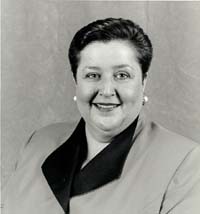
Director Janice Lachance
COMMITMENT: 25
NUMBER OF HIRES: 58
Recruitment Strategies
Since March 1997, the Office of Personnel Management hired a total of 58 employees under the Welfare-to-Work Program, exceeding our goal by 232 percent. A variety of hiring methods are used, including competitive announcements, reinstatement, and temporary student appointing authority.
Our most successful recruitment strategy has been the Worker-Trainee Program. We competitively select 12 to 15 individuals annually and provide them with a specially tailored eight-week training program. This program is designed to develop skills needed to succeed in the workplace. Training includes orientation to the agency’s mission and functions, as well as skills training in areas such as computer software, writing, grammar, customer service, time management, and telephone techniques.
The Office of Human Resources and EEO provides copies of vacancy announcements to and works closely with state and local jurisdictions encouraging them to forward any potential candidates for our consideration. In accordance with the agency’s 10-Point Hispanic Plan, we worked closely with a local jurisdiction with a very high Hispanic population. This effort resulted in the selection of four Hispanic individuals for our last Worker-Trainee Class.
Retention Strategies
Employees are provided with the following assistance to help them succeed:
- Mentoring. We assign a mentor to assist each Worker-Trainee in resolving issues that develop.
- Monitoring. We maintain close contact with program graduates. Frequent meetings are held to discuss issues that surface and to provide information. Individual meetings are held to monitor their progress. Periodic meetings are held with supervisors to obtain feedback and provide information and assistance.
- Employee Assistance Program (EAP). We introduce the Employee Assistance Program to employees on their first day of employment and encourage its use as a resource to address both personal and professional problems.
- Agency Management Support. OPM managers provide support to this program. They fully recognize and understand the difficult transition many of these individuals experience in joining the workforce. As Director, I personally meet with the Worker-Trainee classes during their eight-week training program to offer them my support and encouragement.
For all purchase orders awarded a provision is included to encourage contractors to contact their local employment agency to obtain referrals to fill positions needed to complete the contract work.
For formal contract actions (actions more than $100,000) each competitor is asked to voluntarily submit a plan for hiring welfare recipients. The plan identifies the positions to be filled by welfare recipients and what efforts will be made to recruit these individuals. Contractors receive extra credit in the evaluation of their technical proposal if they submit a plan.
Future Plans
OPM plans to continue the recruitment and retention strategies in place and work closely with each employee to provide the support they need to succeed in the future. In addition, we will continue to play a leadership role in assisting agencies in fulfilling their commitments to the Administration’s Welfare-to-Work Initiative.
SMALL BUSINESS ADMINISTRATION

Administrator Aida Alvarez
COMMITMENT: 120
NUMBER OF HIRES: 61
At the beginning of each fiscal year, the Small Business Administration (SBA) develops a list of offices (Headquarters and District Offices) interested in hiring welfare recipients. We are currently on target with our commitment of 30 per year over a four-year period (Total: 120). To date, SBA has hired 61 welfare recipients.
SBA uses the Worker-Trainee Program appointment authority to hire welfare recipients at the GS-1 level. This program provides promising individuals an opportunity to learn marketable skills and good work habits. OPM’s recent publication of regulations allows for promotion of Worker-Trainees up to the GS-4 level. Worker-Trainees are also eligible for within-grade increases. After 3 years of satisfactory performance, trainees are eligible for conversion to career appointments. SBA explores placement opportunities for individuals receiving public assistance on a continuing basis. We recognize that while many welfare recipients may qualify only for the Worker-Trainee program because of minimal skills, some individuals may have skill levels qualifying them for higher level work.
SBA’s aggressive efforts to identify and actively recruit potential candidates have been successful because of our excellent partnerships with community-based organizations, state employment services, social services agencies, schools, churches and Federal Executive Boards (FEBs). Our experiences have been most positive, both in Headquarters and in the field. We have found that local recruitment sources have proven track records of producing candidates who generally have some level of employability and skills assessment. An information notice about the hiring initiative for each fiscal year is disseminated to all managers and supervisors. Administrative Clerk (Trainee) vacancy announcements are open to all recruiting sources and therefore are published on the OPM Internet site (http://www.usajobs.opm.gov) as well as our SBA site (http://www.sba.gov). We also provide copies of the announcements to the local organizations we work with in identifying potential qualified candidates. Our outreach efforts have been primarily through word of mouth as well as our local partnership efforts (i.e. community-based organizations, state employment services, social services agencies, schools, churches and Federal Executive Boards).
Best Practices to Promote Retention and Success in the Workforce
In September 1998, the Federal Welfare-to-Work Hiring Initiative office contracted a local service provider to administer training to our office Administrative Clerk (Trainee). The employee received six weeks of one on one training, coaching and mentoring on the job. As a result of this intense training, the employee developed better work habits, increased self-esteem and stronger communications skills.
Two videotaped orientation sessions, New Employee Orientation and Supervisory Orientation, were conducted in Headquarters, combined into one video and sent to the Field for their use. We have continued to encourage managers and supervisors to provide training consistent with their resource availability. We also encourage managers to maximize the use of training programs established and/or funded by state and local governments or by the Department of Labor. Earlier this year, we also set aside centralizing training funds for Worker-Trainees.
We recognize the importance of helping our new employees adapt to the workplace environment. One of the ways to quickly assimilate the employees into the office staff is to provide them with any and all developmental opportunities we provide to other employees such as those described above. Supervisors and mentors are provided appropriate training as well as advisory services on as needed basis. The Transportation Equity Act includes a change in federal tax law that allows employees to designate up to 65 pre-tax dollars of their salary each month for public transportation, carpools, and vanpools. We are currently working with the National Finance Center in setting up the pre-tax payroll deduction program that we hope to offer in July. Form W-5, "Earned Income Credit Advance Payment Certificate", is provided in the orientation package of materials upon entering on duty. Additional information is provided throughout the year in information notices.
Benefits of the Federal Welfare-to-Work Hiring Initiative and Plans for the Future
The employees hired have provided many extraordinary gifts to so many of us. Our lives have been enriched by the personal contact we have had with the individuals hired under this initiative.
While we have not yet reached our fiscal year 1999 hiring commitment of 30 welfare recipients, we have identified 40 offices, primarily in the field, that are interested in hiring individuals on public assistance. We continue to receive excellent feedback from managers throughout the Agency about the significant and positive impact of this initiative. We are optimistic that resource availability will enable us to move forward with our recruitment efforts in the very near future. Once these individuals are on board, we will continue to utilize the three key strategies that have proven successful in the past: mentoring, training and recognition.
SOCIAL SECURITY ADMINISTRATION
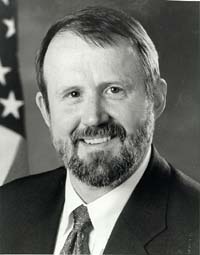
Commissioner Kenneth Apfel
COMMITMENT: 600
NUMBER OF HIRES: 463
Recruiting and Hiring Strategies
The Agency uses all available hiring authorities to ensure a cross section of employees; including, the Worker-Trainee, schedule C and veterans hiring authorities. Generally, job announcements are distributed to state welfare offices, non-profit agencies and are posted on the Office of Personnel Management website. Individuals hired under the Federal Welfare-to-Work Hiring Initiative are located in headquarters as well as our field offices, teleservice centers and program service centers throughout the country.
The majority of the employees have been hired into grade levels with an opportunity for advancement. For example, Worker-Trainees hired at the GS-1 level are eligible for promotion to the GS-4. Also, individuals have been hired for higher grade positions based on experience and/or education, such as GS-7 claims representative.
Our front-line managers play a key role in identifying and recruiting our employees. Throughout the regions, managers have found that local and state welfare agencies, community organizations and vocational rehabilitation representatives have been excellent referral sources for high potential candidates for our Worker-Trainee positions. In addition, some managers have established excellent working relationships with local universities and community colleges. For example, in the Seattle region, managers partner with Department Chairs at the local universities and community colleges to recruit high level candidates.
Efforts to Leverage Contractor Commitments
As part of our effort to encourage contractor participation, we use the "Welfare to Work" notice located on the SSA Office of Acquisition and Grants Information website page. At this website, contractors can obtain updates on the Federal Welfare-to-Work Hiring Initiative relating to tax credits and contacts for each state to assist them in the hiring of welfare recipients in their geographic locations.
We will continue to use every opportunity to encourage business owners to expand their job applicant pool of entry level workers to include welfare recipients. As an example, in the Kansas City region, we have partnered with the Chamber of Commerce of Greater Kansas City to present the "Workforce Resources Summit". The summit was designed to encourage the local business community to hire and train Federal Welfare-to-Work Hiring participants as well as others.
Best Practices to Promote Retention and Success in the Workplace
SSA has been highly successful in retaining Federal Welfare-to-Work hires, with a current retention rate of 90 percent. The personal successes of our employees have been numerous which is evidenced by the promotions earned by these employees.
Key to our success is the use of the three-tiered mentoring model developed by the Agency. This model’s premise is that a strong resource and support system for the new employees is the foundation necessary for success. The new employee’s, supervisor, technical assistant and an Employee Assistance Program (EAP) counselor provide the resources and support to ensure a smooth assimilation into the workforce and ensure that employees are aware of the work supports for which they are eligible, such as the EITC. In addition, the SSA’s Center for Employee Services (CES), Career/Life Planning Service assists Federal Welfare-to-Work hires in addressing many of the concerns that they have transitioning into the workplace, including transportation and child care.
Benefits of the Federal Welfare-to-Work Hiring Initiative and Plans for the Future
This initiative has added to the quality of life for many individuals and families. It has also enabled SSA to bring into its workforce capable and motivated workers who have become an asset to the Agency. We are moving toward completing our commitment of 600 hires and are further committed to maintaining this level.
DEPARTMENT OF STATE
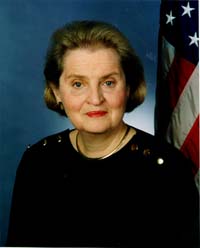
Secretary Madeleine Albright
COMMITMENT: 220
NUMBER OF HIRES: 56
The Department of State has relied on two main routes to hire welfare recipients: the Student Employment Program, and the Worker-Trainee Program.
The Recruitment Division has focused on outreach efforts to place more welfare recipients into student programs. Because the hiring authorities for the Student Employment Program are temporary-excepted service authorities, recruitment can be focused on social service agencies, schools, and community programs. To be eligible, the individual must be a head of a household, receiving public assistance, and have student status. Through intensive outreach and targeted recruitment, the Department has hired 15 welfare recipients through the Student Employment Program. The Worker-Trainee Program offers promising individuals an opportunity to learn basic job readiness, customer services, work skills and habits.
Managers are encouraged to identify opportunities to recruit individuals from the welfare rolls as part of their hiring efforts. In addition to listing vacancies on the USA Jobs website, we have continued outreach efforts by sending vacancy announcements directly to local social service agencies.
Best Practices to Promote Retention and Success in the Workforce
With the assistance of a contractor, the National Foreign Affairs Training Center (NFATC) developed a four-week training and orientation program for Worker-Trainees. Training includes basic skills, teambuilding concepts, and conflict resolution courses. The program also includes continuous developmental training on skills, NFATC clerical and communication courses. Individual Development Plans are developed for Worker-Trainees. Managers and supervisors participate in a diversity training course, and mentors from throughout the Department receive NFATC training. All Federal Welfare-to-Work Hiring employees are informed of the EITC benefits during orientation.
Several Worker-Trainees have converted to GS-03 through GS-05 clerical and secretarial positions. One Worker-Trainee with prior federal service converted to a GS-06 secretary position. Another individual had VRA eligibility and has converted to a VRA appointment.
Benefits of the Federal Welfare-to-Work Hiring Initiative
The Welfare-to-Work Initiative has provided enthusiastic new employees to the Department. We highlighted two Worker-Trainees in out July/August 1998 State Magazine. Both are excited and making good use of the opportunity to be self reliant, and look forward to successful careers within the Department. As of July 1999, the Department has met 25 percent of its total year 2000 commitment. We will continue working with the social service agencies, schools, and private organizations to recruit and hire qualified welfare recipients.
DEPARTMENT OF TRANSPORTATION

Secretary Rodney Slater
COMMITMENT: 400
NUMBER OF HIRES: 290
The Department of Transportation (DOT) uses a variety of authorities to hire federal Welfare-to-Work employees. With the exception of the Federal Aviation Administration (FAA), the Worker-Trainee authority is the primary mechanism utilized. Because of their independent personnel authority, the FAA uses its own direct hire authority for these employees. Former recipients have been placed in clerical, professional, and support positions. The majority of employees receive appointments that provide them health and life insurance benefits.
Operating administrations periodically remind their headquarters and regional managers of our commitment and support for the program. In addition, on February 23, 1999, the Deputy Secretary sent a memorandum to all Assistant Secretaries and Administrators reminding them of the Secretary's commitment, and of their need to continue supporting the initiative.
With the exception of the FAA, all of the DOT components advertise their vacancies on the OPM USA Jobs web site. Operating administrations, including FAA, have been successful in establishing partnerships with state and local social service agencies, Private Industry Councils, and other non-profit organizations as a means of reaching the targeted population. In addition to hiring applicants for targeted vacancies, administrations sometimes refer them to general open vacancies as well.
Efforts to Leverage Contractor Commitments
To encourage contractor participation in welfare to work efforts, DOT is continuing to send letters delineating the initiative to DOT contracting executives who could best foster the program. These letters are included in all solicitations and contract award documents distributed throughout the United States. Along with these letters, a voluntary "Commitment" pledge was distributed to provide an opportunity for contractors to visibly "commit" to using the welfare polls as their prime resource for hiring employees to work under DOT contracts. As a result of disseminating DOT's "Contractor’s Voluntary Welfare-to-Work Commitment" pledges, we have received approximately 35 commitments from industry to use the welfare rolls as a prime resource for selecting employees to assist in meeting DOT requirements.
On their own initiative, DOT procurement offices have also promoted the program by providing information on the program at pre-award and post-award orientation meetings. Future initiatives include a follow-up letter to top contractors re-enforcing our pledge and encouraging their participation in the program.
DOT also has a phone line to respond to any questions that may arise concerning the program, and has created an Acquisition Welfare-to-Work Homepage site for the use of internal and external customers.
Best Practices to Promote Retention and Success in the Workforce
- Identify, train, and assign mentors;
- Partner with other members of the local Federal Executive Board to plan, develop, and present seminars for new hires, their supervisors, and mentors;
- Offer refresher training courses to meet line-of-business needs;
- Provide personal counseling through the Employee Assistance Program, as well as career development and career training;
- Provide full transit benefit assistance to all employees;
- Provide child care subsidies and scholarships in some locations; and,
- Sponsor support groups.
The Federal Welfare-to-Work Hiring Initiative has provided DOT with many talented, dedicated, and valuable employees, who have contributed to our organizational missions. Supervisors and managers have been impressed by the enthusiasm and commitment of new hires. Through this initiative, DOT has also developed partnerships and improved its working relationships with a number of state and local social service agencies.
Our plan is to continue toward our goal, and make the consideration of Federal Welfare-to-Work Hiring applicants a regular part of our ongoing recruitment strategies. We will continue to attend job fairs, provide work experience opportunities, partner with state and local agencies, and promote the program throughout our Department.
DEPARTMENT OF THE TREASURY
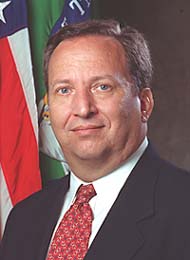
Secretary Lawrence H. Summers
COMMITMENT: 405
NUMBER OF HIRES: 1870
Provided in this report is a compilation of information obtained from the Treasury bureaus. Each bureau was delegated authority to develop and implement a Welfare-to-Work Hiring Strategy under a broad Departmental plan. Strategies and best practices varied from bureau to bureau. This report outlines the predominant strategies as well as the best practices.
Recruiting and Hiring Strategies
A common tool reported by all bureaus was the use of the Office of Personnel Management’s job information website, USA Jobs. This is believed to be the most effective tool for advertising job opportunities. However, the most effective tool for targeting prospective employees who are on public assistance was the development of direct contacts with state and local social service organizations. The nature of the contacts with the social service organizations varied from informal contacts to written partnerships. For example, the Bureau of the Public Debt developed a written partnership agreement in cooperation with the local West Virginia Department of Health and Human Services (DHHS) which provided a structured process to assist Public Debt in the referral and ultimate placement of welfare recipients.
Additional recruitment strategies used by Treasury bureaus include: working with training institutes, civic organizations and local schools; and, advertising using job information flyers, local newspapers, radio and television public service announcements, and bureau websites.
Efforts to Leverage Contractor Commitments
On February 24, 1998, Secretary Rubin signed a letter to prospective Treasury contractors encouraging them to hire people currently on welfare and notifying them that associated recruiting and training expenses for these hires are allowable costs under federal contracts. Treasury procurement offices include a copy of this letter in solicitation packages to all prospective contractors. We do not yet have a full picture of the efficacy of the program, but early signs are promising.
Best Practices to Promote Retention and Success in the Workforce
Practices that have been reported to be effective in promoting retention and success on the job include:
- Orientation Programs. Use of these programs has been effective in helping new employees transition into the workplace.
- Job/Career Development Opportunities. Use of on-the-job training has been particularly useful in ensuring employees are properly trained and thus have every possible chance to succeed. In addition, the use of individual training plans and mentoring programs have stimulated career awareness and in turn should lead to the likelihood of job satisfaction.
- Discretionary Programs.Helping new hires focus on professional responsibilities by providing transportation subsidies, affordable day care, EITC counseling, and flexible leave have greatly smoothed the transition from welfare to work, and have contributed significantly to worker retention.
- Supervisory Training.. Training supervisors to be attuned to the special needs of Welfare-to-Work hires has produced a supportive work environment, contributing to retention.
In Treasury, the Internal Revenue Service (IRS) has been responsible for the majority of Treasury hiring since they engage in a massive hiring effort each year as they prepare for tax season. This initiative has benefited IRS by providing a large pool of suitable job applicants to fill entry level positions. In turn, those hired receive on-the-job training and the opportunity to enhance their work skills, thus improving their ability to obtain better positions in the future.
During the second year of the program, Treasury doubled the number of hires made in the first year, leading to total hiring of more than 460 percent of our initial commitment. With our procedures firmly in place, we expect our hiring success to continue or improve over the next year as we learn from experience and experiment with new strategies. Immediate plans are for the IRS and other Treasury bureaus to increase the number of service organizations contacted in their recruitment efforts, continue to attend job fairs in local areas, and strive to expand the use of appointments under the Worker-Trainee authority.
DEPARTMENT OF VETERANS AFFAIRS
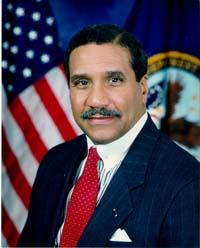
Secretary Togo D. West, Jr.
COMMITMENT: 800
NUMBER OF HIRES: 1380
Recruiting and Hiring Strategies
VA’s hires have been made at more than 160 medical facilities, regional veterans benefits offices, national cemeteries and in Headquarters. New employees are placed in diverse occupations such as Pharmacy Technician, Veteran Claims Examiner, Cemetery Caretaker, Nursing, Food Service Worker, Housekeeping Aid, and Clerk positions. This accomplishment is the result of the commitment of leaders at the facility level and the collaboration of their staffs with the state and local employment counselors and social service agencies. VA is working to establish this type of collaboration in long-term, continuing relationships.
Efforts to Leverage Contractor Commitments
VA promoted and encouraged participation in this national effort by our contracting officers, contractors, and suppliers. We promoted the use by other Government agencies of clinical programs such as VA Compensated Work Therapy and Javits-Wagner-O’Day Act business activities that further the tenets of the Welfare-to-Work Program. The Department developed a VA Acquisition web page. In addition, VA will continue promotional events (such as information booths at training symposiums and discussions at conferences) and written program publicity, and is developing new activities in the acquisition arena. Plans for 1999 include a discussion of the Welfare-to-Work Programs in personal meetings with major contractors and in small business/procurement counseling sessions.
Best Practices to Promote Retention and Success in the Workforce
VA continues to focus on retention issues after its successful recruitment experience. Our efforts are to expand the support and skills development systems that enable new employees to reach their work potential in providing services to veterans. VA’s initial plan provided a basic training outline targeting employees in new jobs and work cultures. The curricula included: orientation, mentoring and job-coaching, counseling, and on-the-job training. VA developed a one-day training session for supervisors, team leaders and mentors of Welfare-to-Work program participants. A "Workplace Principles Workshop" was also developed for the new hires and is available to the field via VA’s Intranet.
Some of the best practices that resulted in successful placement and retention of employees include:
- Assign local liaisons and mentoring for new hires;
- List carpool and housing information through electronic and community bulletin boards;
- Provide computer training, customer service orientation, family friendly leave and work schedules, classroom and on-the-job training, GED and civil service test preparation programs; and,
- Host "Lunch and Learn" seminars; mentoring; on-site child care; and, training for supervisory staff.
VA plans to identify additional tools needed to expand and enhance VA’s program. The Department will continue to play a major role in this initiative during 1999 and 2000, both in identifying employment opportunities and in enhancing employee development and retention. From success stories reported, it is clear that new employees are motivated and are making valuable contributions to VA’s mission of serving the Nation’s veterans and their families.
VA will also continue to publicize this program as appropriate opportunities arise. For example, in upcoming VA regional conferences, the Welfare-to-Work program has been submitted as an example of effective program cooperation across VA organizational lines.